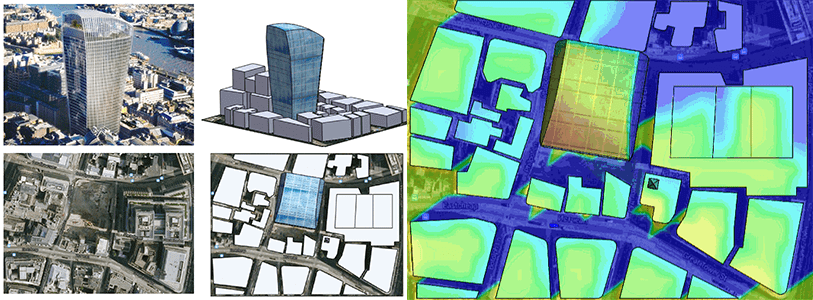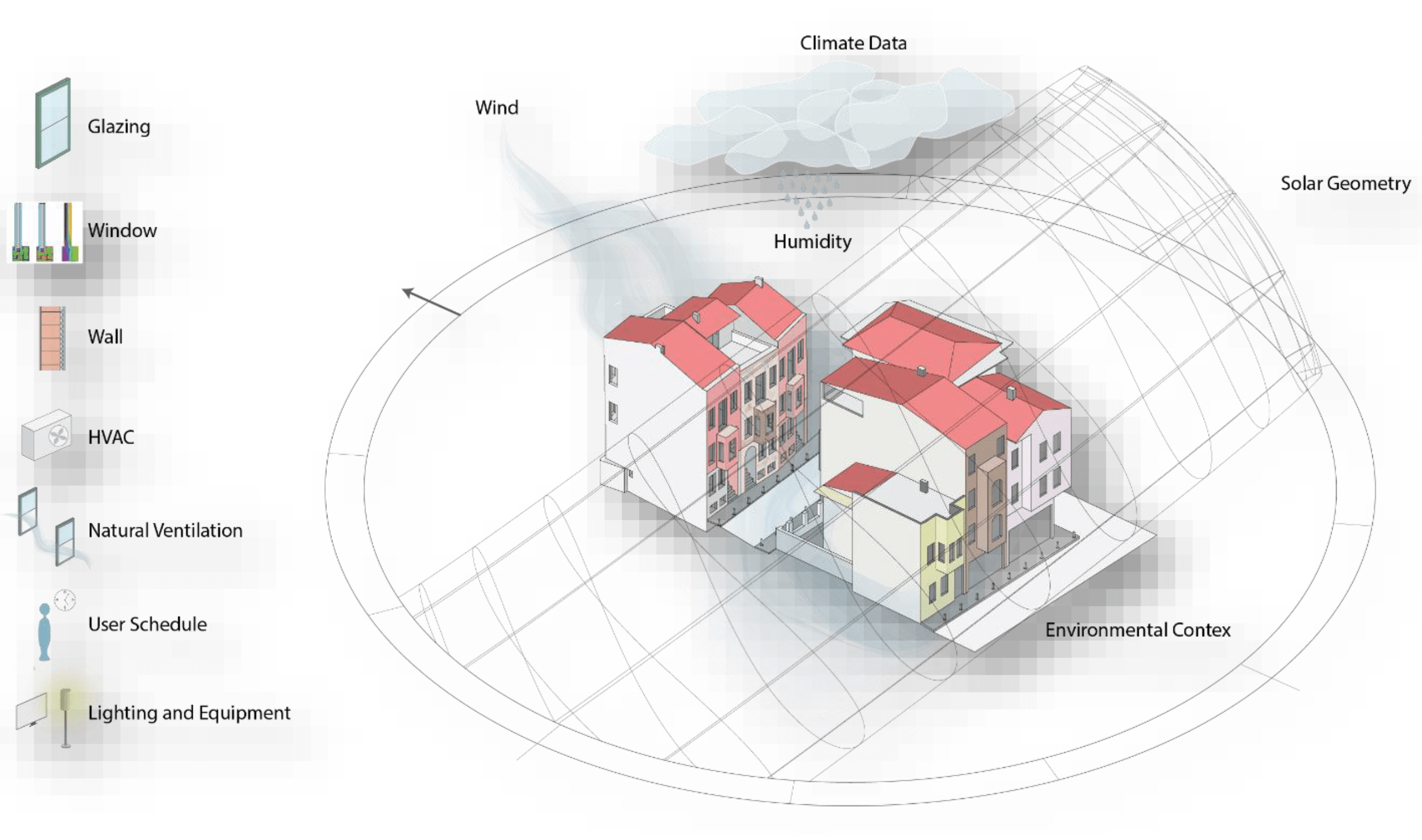Outdoor Thermal Comfort
After lunch, drinking coffee on a bench for 5 minutes, during a day in the garden of the café or a short walk around the building with your workplace, how pleasant is the thermal environment? It is an important parameter in architectural design in order to enjoy the time we spend outside as well as the time we spend in the building.
Increasing the height of the building can make the sitting in front of the café on the ground floor completely negative due to the wind. The solar radiation reflected on you through the glass façade facing the building can be almost uncomfortable enough to roast your skin. Or just blowing in the open air as “breeze”, you can hit the heat island’s hot air in your face due to the dense construction. These are the physical conditions that we interpret as uncomfortable external environment.

We cannot digitize all the emotions and conditions we feel for now. For example, the Norwegians want to take their chairs and towels and spend time in the grass when they see the sun at 10 ° C, but in the same case, a person from Abu Dhabi can hit his teeth with his thick coat. Our cultural attire habits, psychological and physiological differences change the perception of comfort. In addition, when we add the necessity of our clothing selection due to working conditions during the day in different situations (safety clothing, not being able to turn the morning suit into shorts at the end of working hours, etc.), comfort may be very different.
In the architectural design for outdoor use, gradual air conditioning of the exit route will be important if you are going to move occupants from a 20 ° C environment to a 40 ° C outdoor area. Otherwise, people will experience thermal shock. In the design of a stadium, thousands of exciting and energetic people gathered will produce the heat, the wind intake of the stadium, and if we need cooling, it will require detailed calculations.
Especially in urban construction where the number and height of glass façade cladding projects increase, the risk and uncomfortability due to sunbathing are considered as design criteria. The solar radiation reflected from the building facade will disturb those who are walking on the road or waiting in vehicle traffic. It can be interpreted that the glare and shadow ratios will create for the usage areas around the building depending on the type and shape of the glasses. Or you can calculate the settlement and amortization times by calculating which region receives sufficient solar radiation from the first report of your study for solar energy production. Enhanced computing tools communicate with each other through software, combining many data with others, allowing you to report total comfort improvements.

One of the critical issues for projects where tropical climates prevail on designated walkways in inter-building use is the control of rain distribution. If the roof form intended to protect the user is designed for rain distribution only, the rain water that does not come directly can make the passageways unusable with the wind if it is in a windy area. In this case, the comfort area can be expanded by directing with wind breakers and these can be visualized and transferred to architectural design groups.
PMV-PPD comfort parameters used by our engineers for indoor thermal comfort are clarified with different indices in the outdoor environment. For example, the Universal Thermal Climate Index (ETİE) describes comfort according to how people adapt to the clothes they wear outside.
As Alkazar, we are able to identify critical areas for outdoor thermal comfort in the initial design by moving together with the architectural group in the first design, completing the wind analysis with the structure orientation, type and surrounding settlement, and then matching the shading data with the outdoor areas. We complete these visualizations by using SET (standard effective temperatures) or PET (Physiological Equivalent Temperature) units.

In the near future, the necessity of living in the narrow spaces brought by urbanization rather than the internal use of the buildings to be designed will make it important for us to design comfortable areas in terms of outdoor use. Alkazar is ready to support you with all its experience in order to be your solution partner in these designs.





